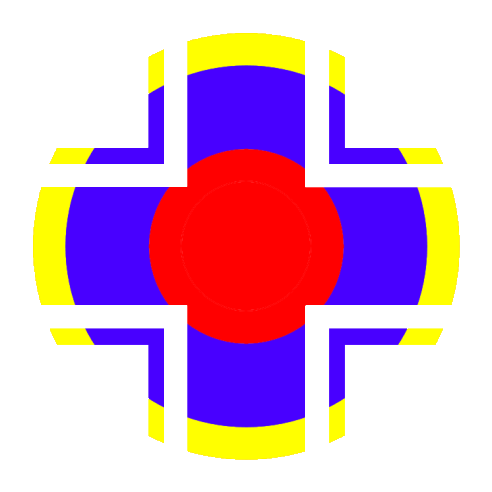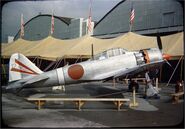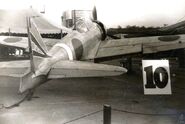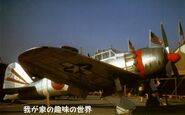History[]
Built by Mitsubishi, around December 1943.[1] Assigned to the 261st Kokutai with tail code 61-???. Likely, the tail code was 61-106, though 61-108 has been quoted as well. However, that code has also been cited for another airframe (that of A6M5 C/n 1293 'TAIC 8').
In Allied hands[]
During June 1944 C/n 4340 was captured at Aslito Air Field on Saipan by US Marines. This Zero was one of fifteen aircraft (plus 37 spare engines) transported to the United States for evaluation. They were loaded aboard the escort carrier USS Copahee (CVE-12) by TAIU–POA, which left the Garapan anchorage off Saipan on 8 July, and unloaded its cargo of fifteen Japanese aircraft and thirty-seven engines at NAS North Island, San Diego, on 28 July. C/n 4340 arrived at NAS Anacostia (across the river from Washington, DC) on 1 September 1944, and had 3:10h Allied flying time registered on the airplane by 20 October 1944.
United States Testing[]
American intelligence coded this aircraft as TAIC 7. In the United States, this Zero was later transported to the U. S. Army Air Forces test organization at Wright Field, Ohio and there coded as FE-130. At Wright Field, Dayton, Ohio from 18 April 1945 to 13 February 1946. As of 13 July 1945, this Zero had flown for 93 hours and 15 minutes in Allied hands. During 1945, displayed at Eglin Field. Evaluated in 1945 at Eglin Field, Florida. To Freeman Field, Indiana, on 4 March 1946 and departed again from Freeman Field on 14 June 1946, by this time probably coded as T2-130.[2]
Colours and markings[]
At one time it had the name "Tokyo Rose" on its engine cowling, the number 4340 in numerals on the left side of the aft fuselage, a simple "V" shaped marking on its fin and 'TAIC 7' on its fin above the "V" shaped marking, and the number "12" on its rudder. Later, the TAIC marking was removed and a large "V" marking somewhat resembling the emblem the Japanese Army Air Force 68th Hikou Sentai applied on the tail. The number "12" remained but was partially covered by the lower arm of the tail marking. A white band with red trim was added to the aft fuselage. The spinner and the cowling flaps were red.
Restoration[]
Acquired by the National Air & Space Museum (NASM) and restored to static display during the late 1970s as the first Japanese aircraft to be restored by the NASM. When restored in 1976, the correct tail marking for this Zero were unknown, and the museum chose the tail markings "61-131". At the time, this Zero was painted in the markings of A6M5 Zero C/n 4361 Tail code 61-131, captured at Aslito Field on Saipan. Later research indicated this Zero must have had tail code 61-108, while at present it looks to have been 61-106.
Display[]
Displayed at the National Air & Space Museum, hanging from the 2nd Floor, World War 2 gallery.[1]
















